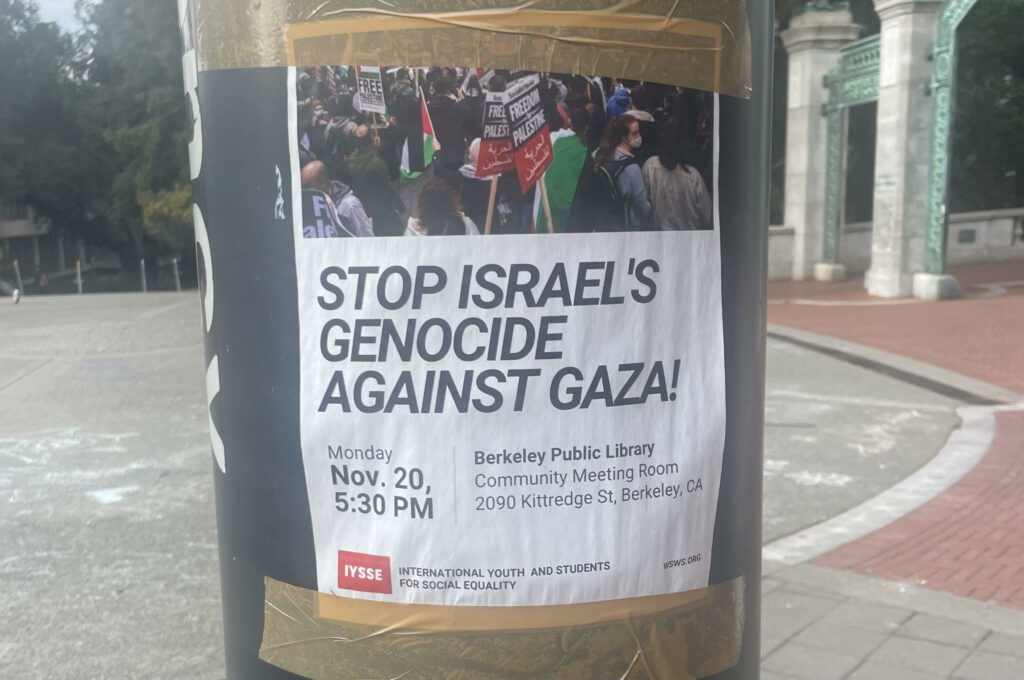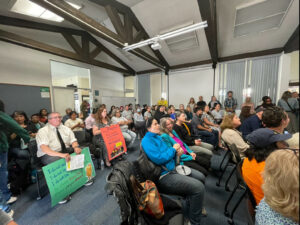In 1516 the Ottoman Empire conquered the territory that is now modern day Israel, and stayed in power until the British conquered the land in 1917. Previous to 1917, the Palestinian people made up 94% of the population in the territory while Jewish people made up 6%. In the coming years a large-scale Jewish migration to Palestine began, partly due to Jewish people fleeing from Nazi Europe during World War II. The migration mainly lasted from 1920 – 1946, and the Jewish population in Palestine rose to 33%.
This kicked off a nearly century-long conflict between the residing groups. The mass migration led to the United Nations (UN) stepping in and creating a Partition Plan in 1947 known as Resolution 181 which gave 55% of the land to the Jews and 45% of the territory to Arabs (Palestinians are part of the Arab ethnic group), while the holy land of Jerusalem was maintained under international control. The UN Partition Plan was never implemented in completion. The following year, the state of Israel was established causing the Arab League to intervene on behalf of Palestinian Arabs, leading to the Arab-Israeli War in 1948. This resulted in the state of Israel violently displacing Palestinians and repossessing their land. This is known as The Nakaba, the Arab word for catastrophe. Over 500 Palestinian villages were destroyed, and 750,000 Palestinians were expelled from their homes and became permanent refugees. 78% of previous Palestinian land was declared as Israel, and the remaining Palestinian people were thrust into a military state, living under the guise of an apartheid rule. An apartheid is a system where one ethnic group is granted more rights than a second class ethnic group through segregated legalized action. The territory ended up being split into three main parts: the State of Israel, the West Bank, and the Gaza strip. Today Palestinians primarily occupy the West Bank and Gaza Strip. Those regions are referred to as Palestine but are still partially controlled by Israel.
The conflict continued and the Six Day War took place in 1967. Israel gained military control of the West Bank from Jordan and the Gaza Strip from Egypt and expelled another 300,000 Palestinians from their homes, thus successfully occupying all of previously historic Palestine.
The first Palestinian uprising against the occupation from Israel took place in 1987, named the First Intifada. International efforts got involved, and the Oslo Accords were established in 1993, which allowed Palestinians to relocate back in the West Bank and Gaza Strip. This peace process had strong opposition from radical parts of Palestinians society, such as the terrorist group, Hamas. Following more years of unsuccessful negotiations, the Second Intifada took place between 2000 and 2005. It was an open conflict between the Palestinian National Security Forces and the Israel Defense Force. Both sides targeted military personnel as well as civilians. 3,000 Palestinians and 1,000 Israelis died, and Israel still remained as the occupying power.
In 2006, terrorist group Hamas won plurality over the previous Palestinian social democratic party in the Palestinian parliamentary election. Hamas seized full control over Gaza, leading to the Gaza War in 2008, an attack on Palestine by the Israel Defense Force. Over 1,000 Palestinians civilians were killed, 5,000 wounded, and 120 were captured. Over 4,000 homes were destroyed and a total of two billion dollars worth of damage was inflicted on Gaza by Israel. 13 Israelis were killed, four from friendly fire. In retaliation to Hamas gaining control in Palestine, Israel imposed an ongoing complete blockade on the two million people in the Gaza strip.
In 2011, Palestinian authorities continued to try to gain UN membership as a fully sovereign state and failed. Hamas still controlled Gaza, and would sporadically attack Israel to limited success, while Israel continued to drop bombs on the Gaza strip and civilian homes. In 2014, Israel launched another large-scale attack on Palestine. 2,310 Palestinian civilians were killed, over 10,000 were wounded, and six Israeli civilians died. Israel continued to maintain overwhelming military power and presence over Palestine, and over 100 military checkpoints were established in the West Bank alone. In the occupied West Bank and East Jerusalem, Israel continued to settle Jewish compounds on Palestinian land. The United Nations has recognized that the 290 Jewish settlement that were created are illegal under international law. Israel continued to limit Palestinian movement through the area.
In 2021, more violence broke out following a police raid by Israel on the Al-Aqsa Mosque during the Muslim holy month of Ramadan. Following the raid, Hamas launched rockets from the Gaza Strip into Israel. Over 90 percent of Hamas’s attacks were intercepted by Israel’s Iron Dome, an aerial defense system. 13 Israelis were killed, including two children. Israel began repeatedly airstricking Gaza, targeting and destroying 94 buildings in Gaza including 40 schools, four hospitals, and 19 medical facilities. 256 Palestinians were killed, including 66 children. In the West Bank, over 500 Palestinains were injured, as well as 1,000 Palestinian protestors being injured in East Jerusalem. Over 72,000 Palestinains were displaced.

On October 7th, 2023, Hamas launched a surprise attack on civilians in southern Israel, killing 1,200 people and kidnapping 240, thus starting the current conflict between Israel and Hamas. Over the past two months, constant air strikes from Israel into Gaza killed over 17,177 Palestinian civilians, including over 6,600 children and creating over 1,000 child amputees. Thousands are still missing under rubble from constant air strikes and bombing. Israel has damaged or destroyed over 98,000 buildings in Gaza, including 221 schools and 12 hospitals. Over 2.3 million Palestinians have been displaced in the Gaza strip, which is over half of Gaza’s total population. In less than the first month of fighting, Israel has dropped 18,000 tons of bombs on Gaza.
A cease-fire began on November 24th, and was renewed twice. 105 Israeli hostages were released, as well as 240 Palestinian prisoners. Fighting resumed on December 1st, which stopped humanitarian aid in Gaza, prompting hundreds more Palestinians to be killed by Israeli bombardments in the following two days. The United Nations Human Rights Chief, Volker Türk, stated on December 3rd, “As a result of Israel’s conduct of hostilities and its orders for people to leave the north and parts of the south, hundreds of thousands are being confined into ever smaller areas in southern Gaza without proper sanitation, access to sufficient food, water and health supplies, even as bombs rain down around them,” he said, adding “there is no safe place in Gaza.” UN experts defined the genocide in Gaza as the; “use of powerful weaponry with inherently indiscriminate impacts, resulting in a colossal death toll and destruction of life-sustaining infrastructure.” As millions of the American public call for another cease fire, for now, the conflict continues.
Hebron, Palestine in the southern West Bank, c. 2000 [Photo Courtesy of David Neunuebel]






Be First to Comment